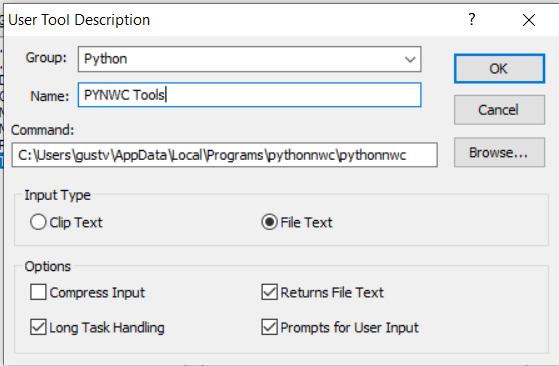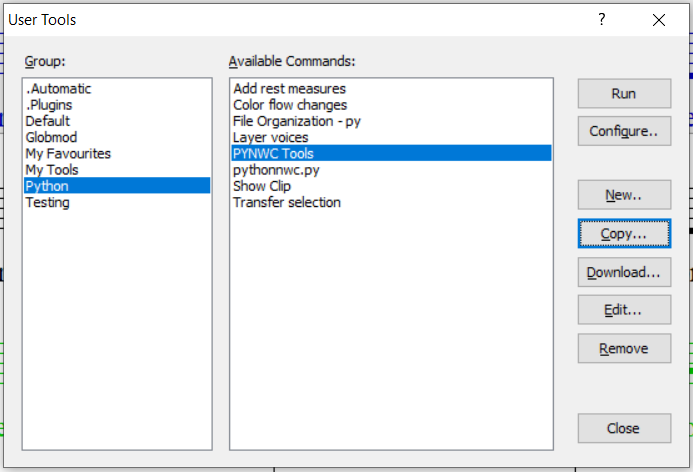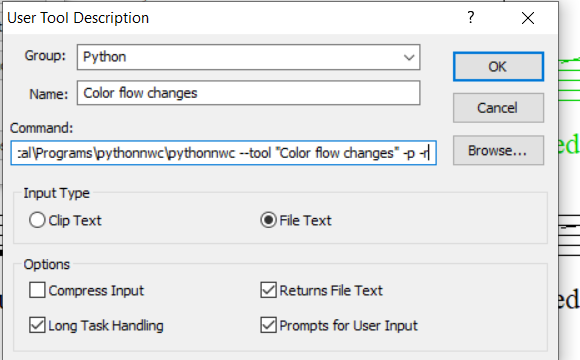Installing PYNWC¶
Installation of PYNWC has to be done in several steps.
First you have to download a .zip file and extract it to obtain a Windows installation file. Opening this file will install the application pythonnwc.exe on your computer.
Next you’ll have to install this application in the User Tool Environment of NWC.
Downloading and installing in Windows¶
Create a destination folder for the application.
Download ‘pythonnwc-0.1-amd64.zip’. 1
Double click the extracted file to install the application and fill in the name of the destination folder.
- 1
Depending on your browser, the downloaded file may be renamed, but extracting it will show the original name ‘pythonnwc-0.1-amd64.msi’ of the Windows installation file.
Installing in NWC¶
Installing in NWC is done by creating an entry in the ‘User Tools’ window of NWC.
The ‘basic’ installation is sufficient to run PYNWC and use all of its tools.
But it’s also possible to create extra entries for the individual tools, by adding some arguments in the command line.
Basic installation¶
Start NWC and open any NWC file.
Go to ‘Menu Tools/User Tool../New…’. A ‘User Tool Description’ window is opened.
Fill in: - Group: choose from the select list or create a new one - Name: ‘PYNWC Tools’ (or anything else) - Command: your destination folder + ‘\pythonnwc’
Set Input Type to ‘File Text’
Set Options: - ‘Returns File Text’ - ‘Long Task Handling’ - ‘Prompts for User Input’
Click ‘OK’

Installation for a specific tool¶
In the ‘Users Tool’ window of NWC, select the entry from the basic installation.
Click ‘Copy…’.

A ‘User Tool Description’ window is opened.

Change the name
Add arguments 2 to the command line.
Click ‘OK’
- 2
Arguments: An argument starts with a hyphen ‘-‘ followed by a character, or two hyphens, followed by a word. You can use following arguments:
‘t’ or ‘tool’ followed by the tool name: will automatically select the desired tool. If the tool name contains spaces, enclose it within double quotes.
Additionally you can add one or more of the following flags:
‘p’ or ‘parameters’ to open the ‘tool parameters’ window.
‘r’ or ‘run’ to run the tool.
‘c’ or ‘save’ to save after running.
‘x’ or ‘exit’ to exit after running (and saving).